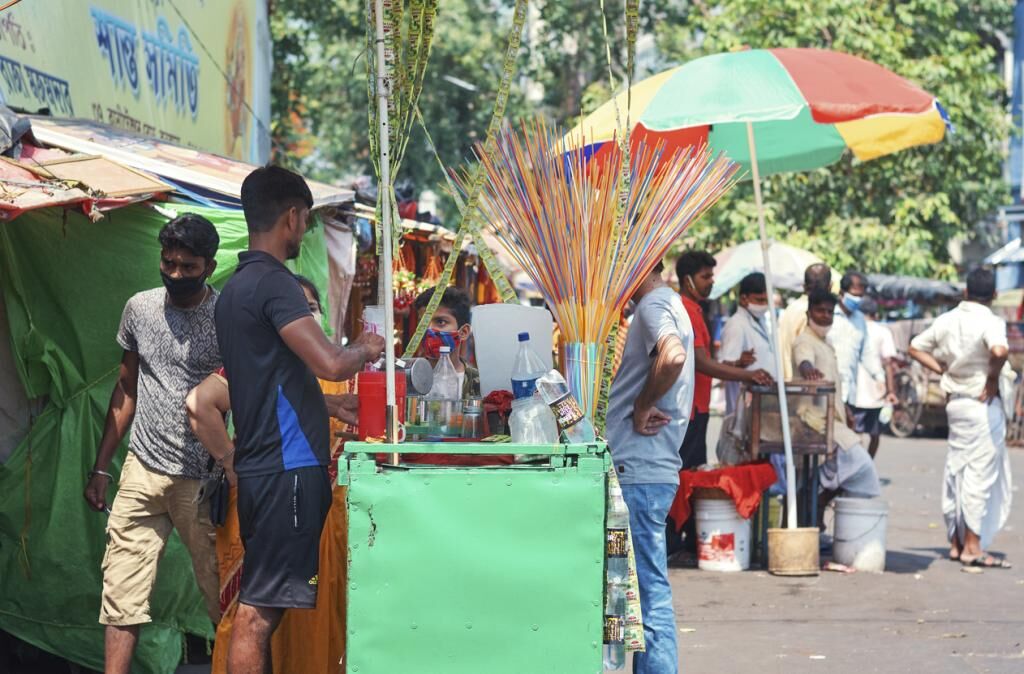A long way to go
India has made a good beginning by ‘partially’ banning single-use plastics; all stakeholders need to come together to make the move a success

India's ban on select single-use plastic items has come into effect from July 1, 2022. Although this is the country's first attempt to regulate plastics available in the market, it will send out the wrong message if we say "India is banning single-use plastic".
This is because even after July 1, the Indian market continues to sell a gamut of single-use plastic items like soft drinks and mineral water bottles, all products sold in multi-layered packaging, among others. These plastic items perfectly fit the bill for single-use plastic going by the definition India has adopted.
India defined single-use plastic in an August 12, 2021 notification as "plastic item intended to be used once for the same purpose before being disposed of or recycled".
In the same notification, the Union Ministry of Environment, Forest and Climate Change had devised a phase-out plan for 21 select single-use items — which excluded plastic packaging materials.
The media is doing a commendable job of spreading the word about the ban, but needs to avoid calling it a blanket ban on single-use plastic. A similar problem was observed when Europe and, most recently, Canada identified a meagre 10 single-use plastic items to be banned; the media labelled them as countries who have banned single-use plastic.
The Indian government has tried to identify a handful of problematic plastics, which are low-utility and have high littering potential, from the bucket of single-use plastic commodity list and give the industry a reasonable time to phase them out.
But many items have been left out. Plastic carry bags, for instance, will not be banned, they will still be available but the thickness has been regulated to be more than 75 microns till December 31, 2022, and more than 120 microns from December 31, 2022 onward.
Similarly, banners made from polyvinyl chloride (PVC), will still be available, but the thickness should not be less than 100 microns, the government mandated.
So, in no stretch of imagination is India banning all single-use plastic items.
Industry resists
One of the plastic items listed for phase out that is facing a lot of resistance is plastic straws. Giant fast-moving consumer goods (FMCG) companies are claiming that plastic straws are an inherent part of the product packaging and hence have a low littering propensity.
The plastic industry, along with companies such as Parle Agro, Amul, Dabur, Pepsico and All India Plastic Manufacturers Association (AIPMA), are seeking an extension of 6-12 months on the ban, citing issues like unavailability of alternatives, economic infeasibility and demand-supply gap, which will increase the cost of their product packaging.
It is important to note that the first announcement for phasing out single-use plastic was made on August 15, 2019 by the Prime Minister of India. Roughly two years later, in March 2021, the draft notification was released.
The deadline for phase out, proposed in the draft notification, was January 1, 2022. In the final notification released in August 2021, the deadline was extended to July 1, 2022 based on the request from the plastic industry and AIPMA.
This means, an extension of six months was already granted to the industry, to transition away from single-use plastic items listed for phase out.
Substitution challenge
Alternatives are another aspect of the plastic ban. It is understood that the alternatives market in India is at a nascent stage, which forces companies to import and thus, increases cost.
The alternatives manufactured in India come with a premium price which may be unaffordable in most cases. This is primarily due to the scale at which the alternative market currently operates.
The alternative market needs to be offered support through government initiatives to make their reach wider. However, caution is needed when promoting alternatives, so as not to create a fresh set of problems while fighting plastic pollution.
Making India plastic-pollution free is not going to be easy and the responsibility is not limited to one stakeholder — the plastic industry or governments, for instance. All the stakeholders involved from the production of raw materials, plastic manufacturers, giant FMCG companies, national, state and local government along with the consumers have their parts to play to make the ban a success.
The plastic industry, manufacturers and FMCG companies should consider coming up with design changes in their product packaging to eliminate the necessity of ancillary plastics like straws. This will be possible when the companies come together and pool their resources to find an optimal design that not only promotes profit but also cares for people and the planet.
The national and state governments have a long road ahead of them to ensure enforcement of the notified ban. We just cannot envisage that from July, India will become a single-use plastic free nation.
This is going to be a work in progress, wherein the state pollution control boards and pollution control committees will need to get down on the ground for inspection of facilities, known to be hubs for plastic manufacturing to stop the production of the banned plastic items right at the source.
Consumers like you and me also have a role to play, which ranges from refusing the use of plastic carry bags irrespective of the thickness, consuming consciously and, of course, segregating the solid waste we generate in our households. This will ensure plastic waste can be diverted away from dumpsites to treatment facilities, where it can be recycled and given a second life. DTE
Views expressed are personal



